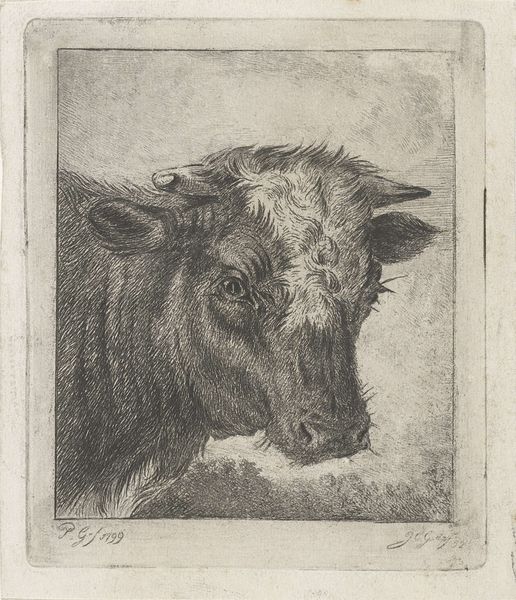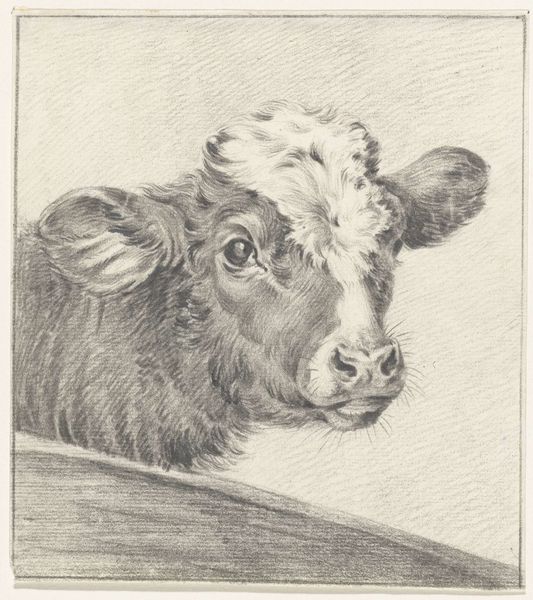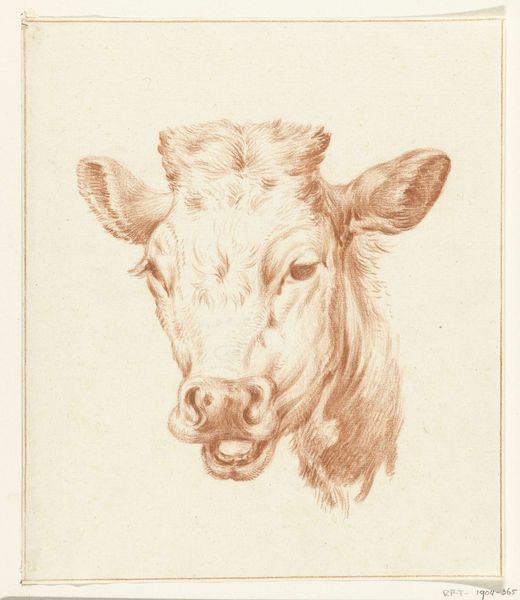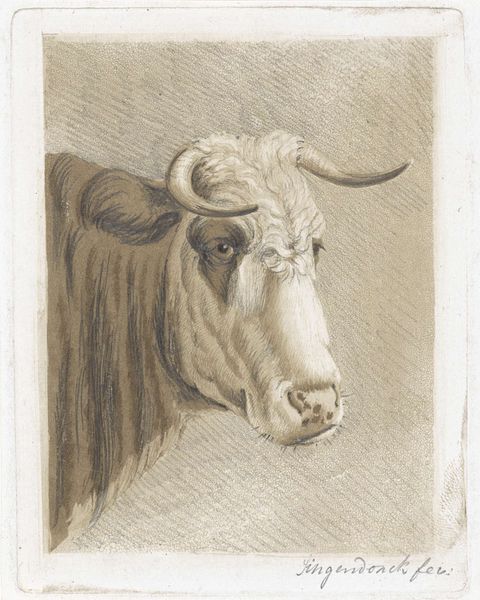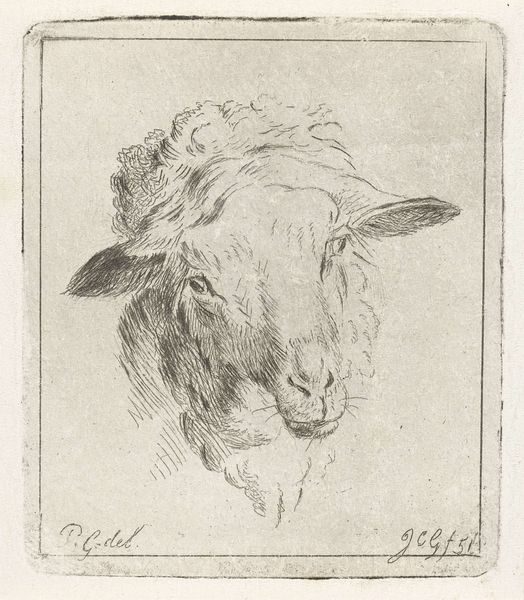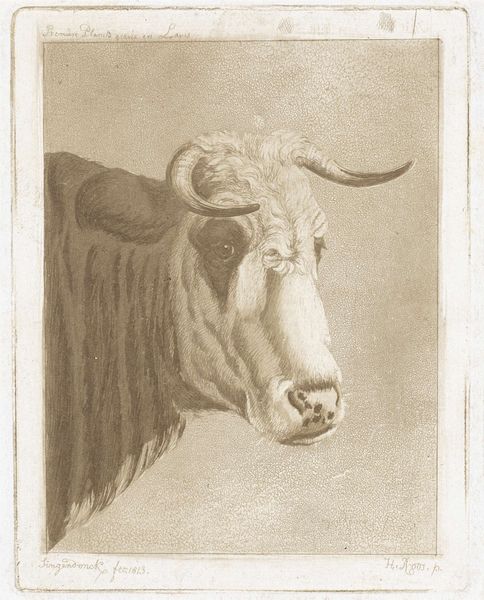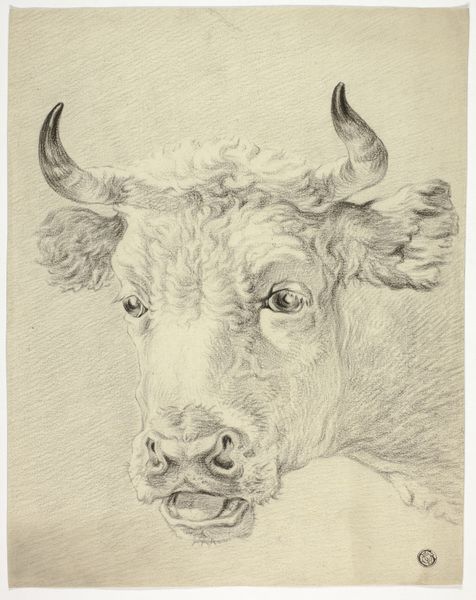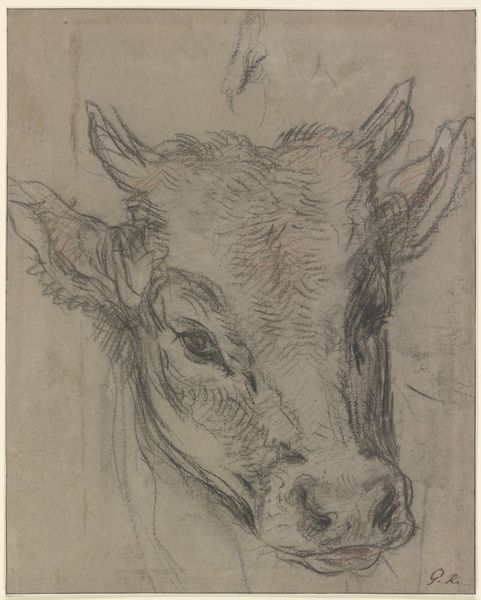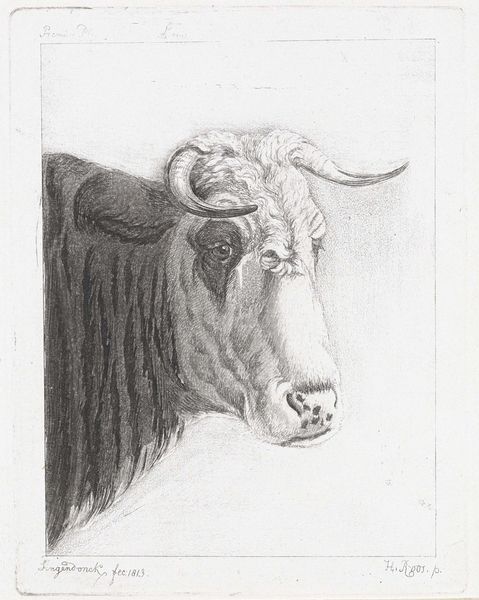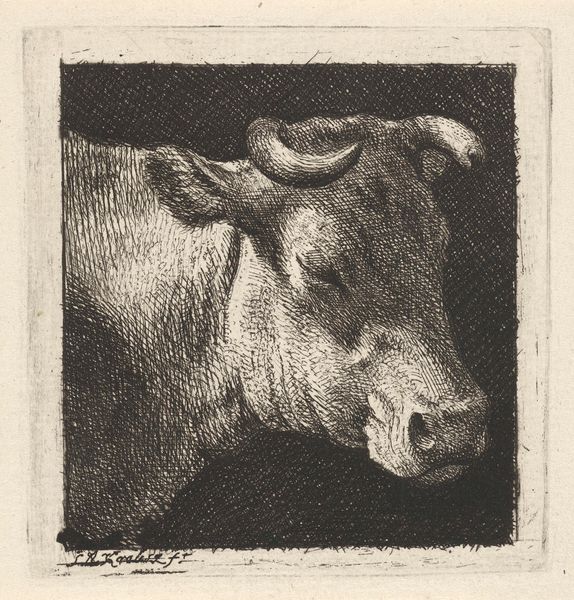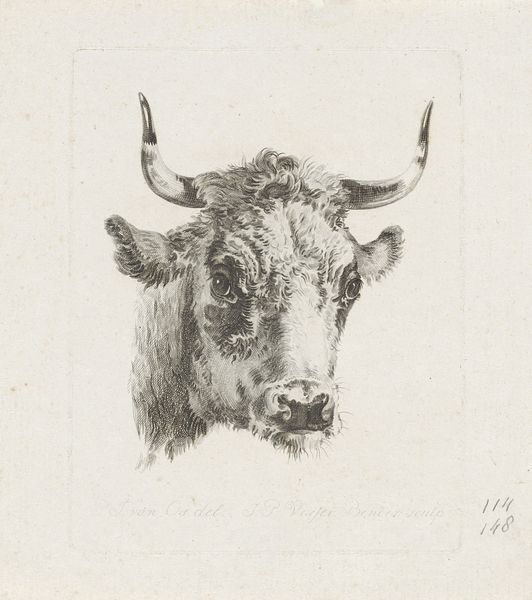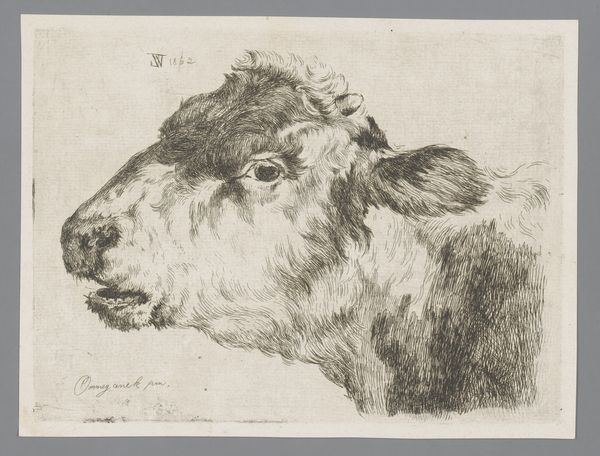
print, etching
#
portrait
#
animal
# print
#
etching
#
realism
Dimensions: height 112 mm, width 93 mm
Copyright: Rijks Museum: Open Domain
Curator: Here we have Jacobus Cornelis Gaal's "Head of a Cow with a White Spot," created around 1850. It resides here at the Rijksmuseum. Editor: It's remarkably stark, isn't it? The simplicity of the etching really focuses the eye on the texture and details of the cow's face. There's a sort of humble nobility there. Curator: Exactly! Gaal’s rendering connects to a deep lineage of agrarian Romanticism. In Dutch Golden Age painting, the cow held a symbolic weight reflecting national pride and economic prosperity. But this work seems to both embrace and question that symbolism. Editor: It certainly grounds that symbolism, bringing us to the practical materiality. You can almost feel the roughness of the hair and the solid weight of its skull, thanks to the etching technique, right? I mean, Gaal wasn’t just capturing an image; he was wrestling with a copper plate, acid, and ink, mediating nature through human craft. The labor! Curator: And consider the sociopolitical landscape of the mid-19th century. Rural populations were shifting, industrialization was burgeoning, and national identity was undergoing profound re-evaluation. The etching becomes a visual commentary on those shifting agricultural dynamics. Editor: Absolutely. The etching, a reproducible medium, also plays a role in democratizing the image of labor. Unlike a unique painting destined for a wealthy patron, an etching allows for wider dissemination and engagement with a critical view of pastoral life. Curator: The cow stares at us with this placid gaze and prompts reflections on human dominion and the realities of animal existence within agrarian labor. What would it be like, I wonder, to see its whole world narrowed down to a plot of grass, a stall, and a pail? Editor: It leaves one contemplating the nature of work itself. Gaal captured it as a product, a piece of paper pulled from a press – not too dissimilar, I suppose, from the milk a cow provides from grass. It prompts a reflection of our relationship with living things as laborers within economic structures. Curator: A perspective that broadens and deepens thanks to the interplay of form, content, and medium. Editor: Indeed. The way art always brings us back to thinking, and working, differently!
Comments
No comments
Be the first to comment and join the conversation on the ultimate creative platform.

